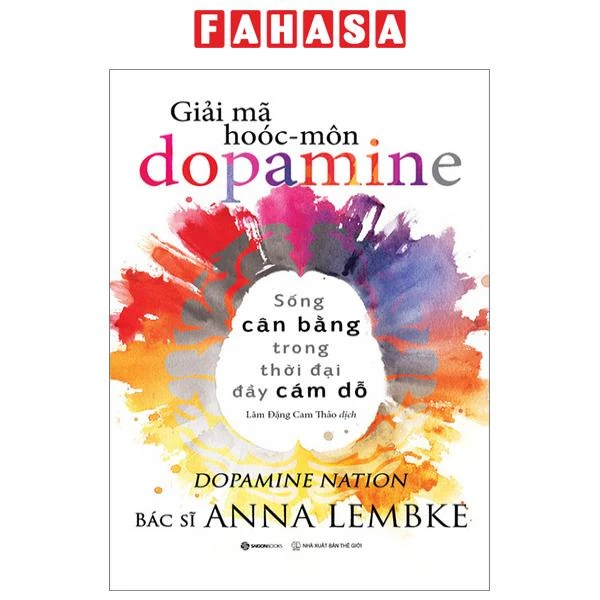EIF3I
| EIF3I | |||||||||||||||
|---|---|---|---|---|---|---|---|---|---|---|---|---|---|---|---|
| Mã định danh | |||||||||||||||
| Danh pháp | EIF3I, EIF3S2, PRO2242, TRIP-1, TRIP1, eIF3-beta, eIF3-p36, eukaryotic translation initiation factor 3 subunit I | ||||||||||||||
| ID ngoài | OMIM: 603911 HomoloGene: 2786 GeneCards: EIF3I | ||||||||||||||
| |||||||||||||||
| Gen cùng nguồn | |||||||||||||||
| Loài | Người | Chuột | |||||||||||||
| Entrez |
| ||||||||||||||
| Ensembl |
| ||||||||||||||
| UniProt |
| ||||||||||||||
| RefSeq (mRNA) |
| ||||||||||||||
| RefSeq (protein) |
| ||||||||||||||
| Vị trí gen (UCSC) | n/a | n/a | |||||||||||||
| PubMed | [1] | n/a | |||||||||||||
| Wikidata | |||||||||||||||
| |||||||||||||||
Tiểu đơn vị I của yếu tố khởi đầu dịch mã sinh vật nhân thực 3 (tiếng Anh: Eukaryotic translation initiation factor 3 subunit I) là protein ở người được mã hóa bởi gen EIF3I.[2][3][4]
Tương tác
[sửa | sửa mã nguồn]EIF3I có khả năng tương tác với TGF beta 1[5] và EIF3A.[3][6][7]
Xem thêm
[sửa | sửa mã nguồn]Tham khảo
[sửa | sửa mã nguồn]- ^ “Human PubMed Reference:”.
- ^ Chen RH, Miettinen PJ, Maruoka EM, Choy L, Derynck R (tháng 11 năm 1995). “A WD-domain protein that is associated with and phosphorylated by the type II TGF-beta receptor”. Nature. 377 (6549): 548–52. doi:10.1038/377548a0. PMID 7566156.
- ^ a b Asano K, Kinzy TG, Merrick WC, Hershey JW (tháng 2 năm 1997). “Conservation and diversity of eukaryotic translation initiation factor eIF3”. J. Biol. Chem. 272 (2): 1101–9. doi:10.1074/jbc.272.2.1101. PMID 8995409.
- ^ “Entrez Gene: EIF3S2 eukaryotic translation initiation factor 3, subunit 2 beta, 36kDa”.
- ^ Choy L, Derynck R (tháng 11 năm 1998). “The type II transforming growth factor (TGF)-beta receptor-interacting protein TRIP-1 acts as a modulator of the TGF-beta response”. J. Biol. Chem. 273 (47): 31455–62. doi:10.1074/jbc.273.47.31455. PMID 9813058.
- ^ Ewing RM, Chu P, Elisma F, Li H, Taylor P, Climie S, McBroom-Cerajewski L, Robinson MD, O'Connor L, Li M, Taylor R, Dharsee M, Ho Y, Heilbut A, Moore L, Zhang S, Ornatsky O, Bukhman YV, Ethier M, Sheng Y, Vasilescu J, Abu-Farha M, Lambert JP, Duewel HS, Stewart II, Kuehl B, Hogue K, Colwill K, Gladwish K, Muskat B, Kinach R, Adams SL, Moran MF, Morin GB, Topaloglou T, Figeys D (2007). “Large-scale mapping of human protein-protein interactions by mass spectrometry”. Mol. Syst. Biol. 3 (1): 89. doi:10.1038/msb4100134. PMC 1847948. PMID 17353931.
- ^ Mayeur GL, Fraser CS, Peiretti F, Block KL, Hershey JW (tháng 10 năm 2003). “Characterization of eIF3k: a newly discovered subunit of mammalian translation initiation factor elF3”. Eur. J. Biochem. 270 (20): 4133–9. doi:10.1046/j.1432-1033.2003.03807.x. PMID 14519125.
Đọc thêm
[sửa | sửa mã nguồn]- Akoulitchev S, Mäkelä TP, Weinberg RA, Reinberg D (1995). “Requirement for TFIIH kinase activity in transcription by RNA polymerase II”. Nature. 377 (6549): 557–60. doi:10.1038/377557a0. PMID 7566158.
- Maruyama K, Sugano S (1994). “Oligo-capping: a simple method to replace the cap structure of eukaryotic mRNAs with oligoribonucleotides”. Gene. 138 (1–2): 171–4. doi:10.1016/0378-1119(94)90802-8. PMID 8125298.
- Méthot N, Rom E, Olsen H, Sonenberg N (1997). “The human homologue of the yeast Prt1 protein is an integral part of the eukaryotic initiation factor 3 complex and interacts with p170”. J. Biol. Chem. 272 (2): 1110–6. doi:10.1074/jbc.272.2.1110. PMID 8995410.
- Suzuki Y, Yoshitomo-Nakagawa K, Maruyama K, Suyama A, Sugano S (1997). “Construction and characterization of a full length-enriched and a 5'-end-enriched cDNA library”. Gene. 200 (1–2): 149–56. doi:10.1016/S0378-1119(97)00411-3. PMID 9373149.
- Galli-Stauber C, Raho G, Rossi D, Corona DF, Pirola B, Bonaglia MC, Zuffardi O, Sorrentino V (1998). “Genomic structure and chromosomal location of the human TGFbeta-receptor interacting protein-1 (TRIP-1) gene to 1p34.1”. FEBS Lett. 426 (2): 279–82. doi:10.1016/S0014-5793(98)00361-5. PMID 9599024.
- Choy L, Derynck R (1998). “The type II transforming growth factor (TGF)-beta receptor-interacting protein TRIP-1 acts as a modulator of the TGF-beta response”. J. Biol. Chem. 273 (47): 31455–62. doi:10.1074/jbc.273.47.31455. PMID 9813058.
- Block KL, Vornlocher HP, Hershey JW (1998). “Characterization of cDNAs encoding the p44 and p35 subunits of human translation initiation factor eIF3”. J. Biol. Chem. 273 (48): 31901–8. doi:10.1074/jbc.273.48.31901. PMID 9822659.
- Poelzl G, Kasai Y, Mochizuki N, Shaul PW, Brown M, Mendelsohn ME (2000). “Specific association of estrogen receptor beta with the cell cycle spindle assembly checkpoint protein, MAD2”. Proc. Natl. Acad. Sci. U.S.A. 97 (6): 2836–9. doi:10.1073/pnas.050580997. PMC 16016. PMID 10706629.
- McGonigle S, Beall MJ, Pearce EJ (2002). “Eukaryotic initiation factor 2 alpha subunit associates with TGF beta receptors and 14-3-3 epsilon and acts as a modulator of the TGF beta response”. Biochemistry. 41 (2): 579–87. doi:10.1021/bi011407z. PMID 11781097.
- Mayeur GL, Fraser CS, Peiretti F, Block KL, Hershey JW (2003). “Characterization of eIF3k: a newly discovered subunit of mammalian translation initiation factor elF3”. Eur. J. Biochem. 270 (20): 4133–9. doi:10.1046/j.1432-1033.2003.03807.x. PMID 14519125.
- Fraser CS, Lee JY, Mayeur GL, Bushell M, Doudna JA, Hershey JW (2004). “The j-subunit of human translation initiation factor eIF3 is required for the stable binding of eIF3 and its subcomplexes to 40 S ribosomal subunits in vitro”. J. Biol. Chem. 279 (10): 8946–56. doi:10.1074/jbc.M312745200. PMID 14688252.
- Lehner B, Sanderson CM (2004). “A protein interaction framework for human mRNA degradation”. Genome Res. 14 (7): 1315–23. doi:10.1101/gr.2122004. PMC 442147. PMID 15231747.
- Rush J, Moritz A, Lee KA, Guo A, Goss VL, Spek EJ, Zhang H, Zha XM, Polakiewicz RD, Comb MJ (2005). “Immunoaffinity profiling of tyrosine phosphorylation in cancer cells”. Nat. Biotechnol. 23 (1): 94–101. doi:10.1038/nbt1046. PMID 15592455.
- Rual JF, Venkatesan K, Hao T, Hirozane-Kishikawa T, Dricot A, Li N, Berriz GF, Gibbons FD, Dreze M, Ayivi-Guedehoussou N, Klitgord N, Simon C, Boxem M, Milstein S, Rosenberg J, Goldberg DS, Zhang LV, Wong SL, Franklin G, Li S, Albala JS, Lim J, Fraughton C, Llamosas E, Cevik S, Bex C, Lamesch P, Sikorski RS, Vandenhaute J, Zoghbi HY, Smolyar A, Bosak S, Sequerra R, Doucette-Stamm L, Cusick ME, Hill DE, Roth FP, Vidal M (2005). “Towards a proteome-scale map of the human protein-protein interaction network”. Nature. 437 (7062): 1173–8. doi:10.1038/nature04209. PMID 16189514.
- Guo D, Han J, Adam BL, Colburn NH, Wang MH, Dong Z, Eizirik DL, She JX, Wang CY (2005). “Proteomic analysis of SUMO4 substrates in HEK293 cells under serum starvation-induced stress”. Biochem. Biophys. Res. Commun. 337 (4): 1308–18. doi:10.1016/j.bbrc.2005.09.191. PMID 16236267.
- Oh JH, Yang JO, Hahn Y, Kim MR, Byun SS, Jeon YJ, Kim JM, Song KS, Noh SM, Kim S, Yoo HS, Kim YS, Kim NS (2005). “Transcriptome analysis of human gastric cancer”. Mamm. Genome. 16 (12): 942–54. doi:10.1007/s00335-005-0075-2. PMID 16341674.
Chúng tôi bán
 GIẢM
25%
GIẢM
25%
148.000 ₫
198.000 ₫
 GIẢM
60%
GIẢM
60%
11.600 ₫
29.000 ₫
 GIẢM
17%
GIẢM
17%
50.000 ₫
60.000 ₫
 GIẢM
13%
GIẢM
13%
6.500 ₫
7.500 ₫
 GIẢM
50%
GIẢM
50%
280.000 ₫
560.000 ₫




![[Genshin Impact] Tại sao Eula lại hot đến vậy](https://c4.wallpaperflare.com/wallpaper/615/566/472/anime-girls-genshin-impact-eula-genshin-impact-hd-wallpaper-preview.jpg)
